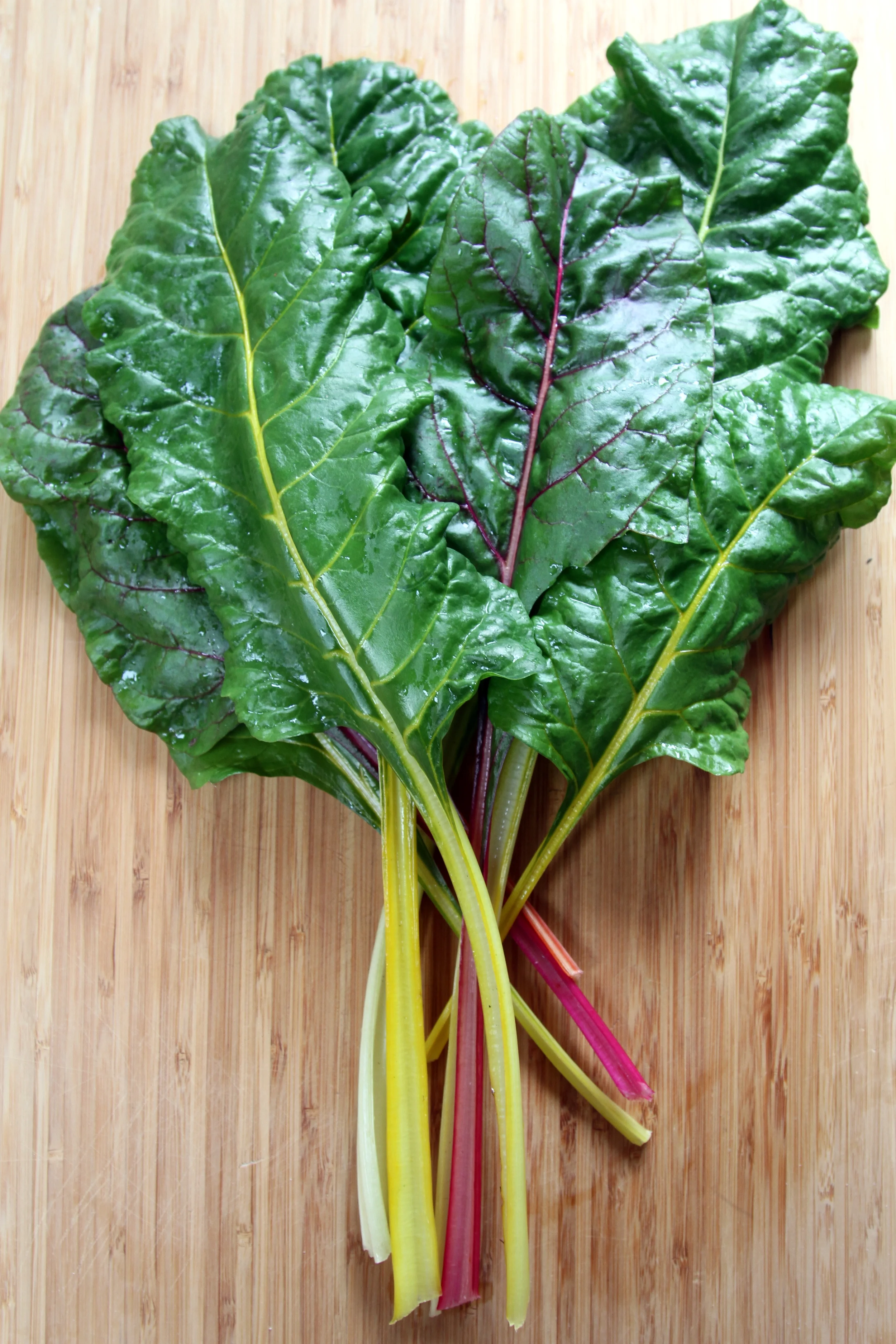Move Over Kale & Make Room for Swiss Chard
I'm just going to come right out and say it. I'm sick of hearing about "kale." It's everywhere - kale salad, kale chips, kale juices, kale cookies, blah, blah, blah. Listen kale, you've had enough time in the spotlight. It's time to move over and make room for Swiss chard.
Did you know that Swiss chard isn't Swiss at all, but has Mediterranean origins? A Swiss botanist was the first to identify it, so the Swiss got the title. I suppose it doesn't matter much as it's also known as silverbeet, Roman kale, rainbow chard, strawberry spinach, perpetual spinach, spinach beet, crab beet, bright lights, seakale beet, and mangold. Whew....I'll just stick to "Swiss chard" for this post.
Swiss chard is PACKED with nutrition. It's a great source of vitamins A, C & K, magnesium, potassium, iron, minerals, dietary fiber, and protein. It's great for just about everyone (unless you're prone to kidney stones...you might want to avoid having too much chard as it is also rich in oxalates).
This year, I didn't start my chard from seed, I picked up a few starter plants at the Maplewood Garden Club sale. If you've never been and you live in the area, reserve time on the first Thursday - Saturday in May and get yourself over there. The sale benefits the Maplewod Garden Club, an organization who does many projects around town, from beautification and education to youth programs. If you live in an area farther away, check out your local sources and garden clubs who may have similar sales. I only picked up a few plants this go around because I was still getting over my mistake of growing too many leafy lettuce greens last year. Unlike lettuce, however, Swiss chard can be cooked in a variety of ways, so next year, I'm going for broke and growing a lot more of it. In fact, I may sow some seeds directly for a fall crop. To do this, you want to direct sow seeds about 10 weeks before your first frost is predicted.
Its colorful stalks and large leaves that tower over the garden are beautiful to look at and tasty to eat. Swiss chard grows well in the ground or in containers and unlike many other leafy greens, tolerates both hot and cool temps well (but won't withstand hard freeze).
Growing Swiss Chard
If you're going to directly sow Swiss chard, you want to start in spring, about 2-3 weeks before your last frost date. Swiss Chard can tolerate some frost, but may bolt if exposed to prolonged freezing temps. If you're starting seeds indoors, start them about 3-4 weeks before the last frost date. For fall harvest, if starting indoors, start about 10 weeks before your first predicted frost date or direct sow seeds about 4-6 weeks prior to the first predicted fall frost date.
Harvesting Swiss Chard
Leaves can grow big and tall - you can start to harvest when they get about 6-8 inches tall or let them mature longer and grow bigger. Cut the stalks of the leaves about 2 inches above the crown.
Cooking Swiss Chard
Rustic Swiss Chard Tart
You can eat the leaves raw or do something as simple as saute them with olive oil, salt and pepper (or throw in a few red pepper flakes for a kick). Typically, the ribs and stalks are removed and the greens eaten. However, I find chopping the stalks into small pieces and sauteing them until tender alleviates some of the bitterness.
If you're looking for a tasty way to cook your Swiss chard, check out my recipe for a Rustic Swiss Chard Tart. It's great for any breakfast, brunch or lunch dish. It contains simple ingredients and it's prepared in a way that doesn't require that you slave over the detail of cute little tarts. These are rustic, rough-around-the-edges and fun to make.






